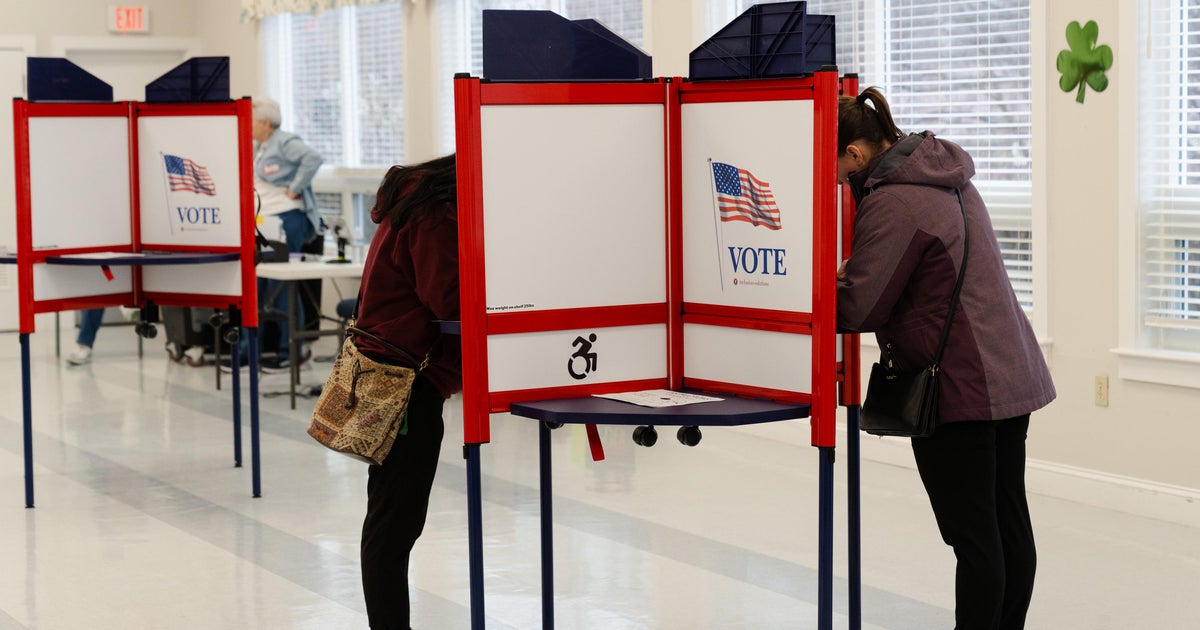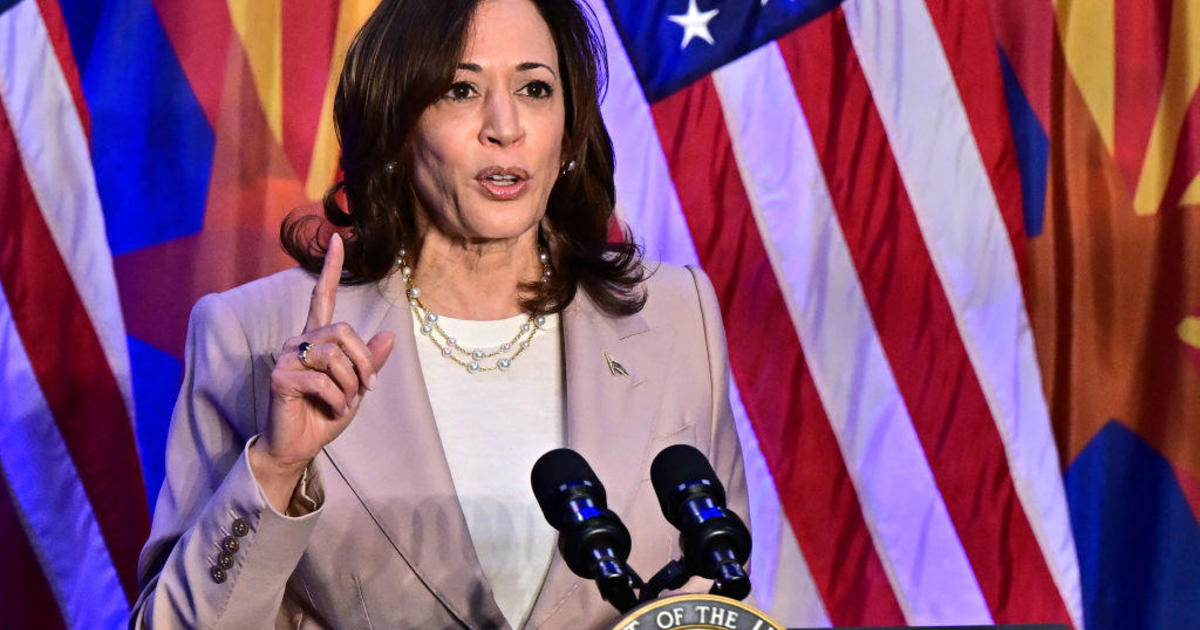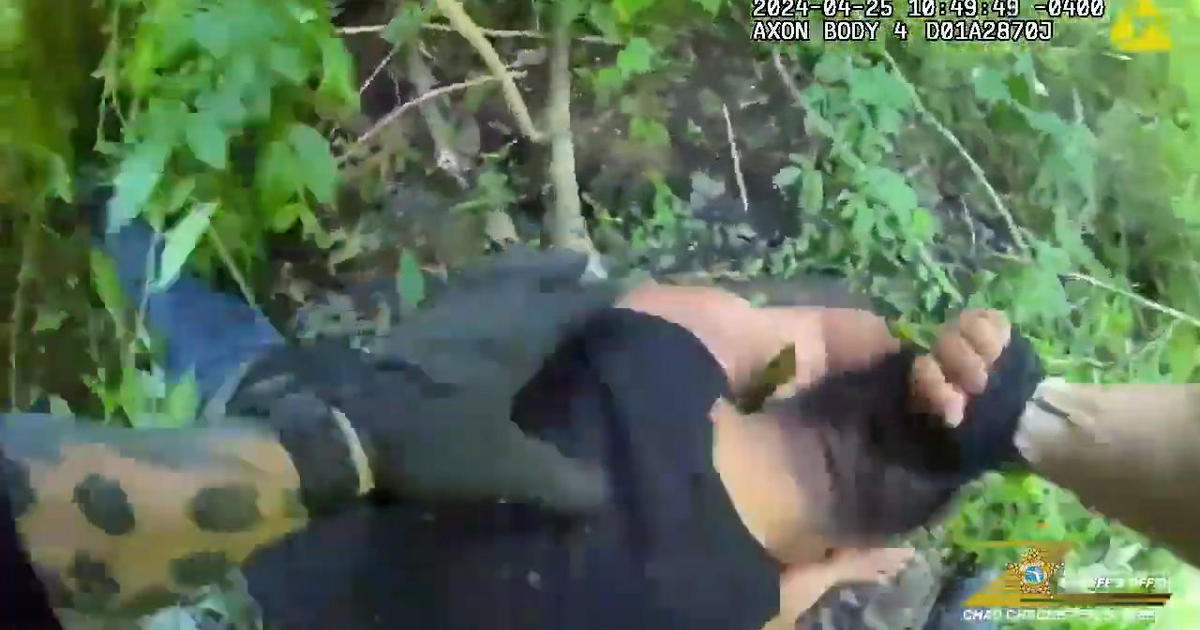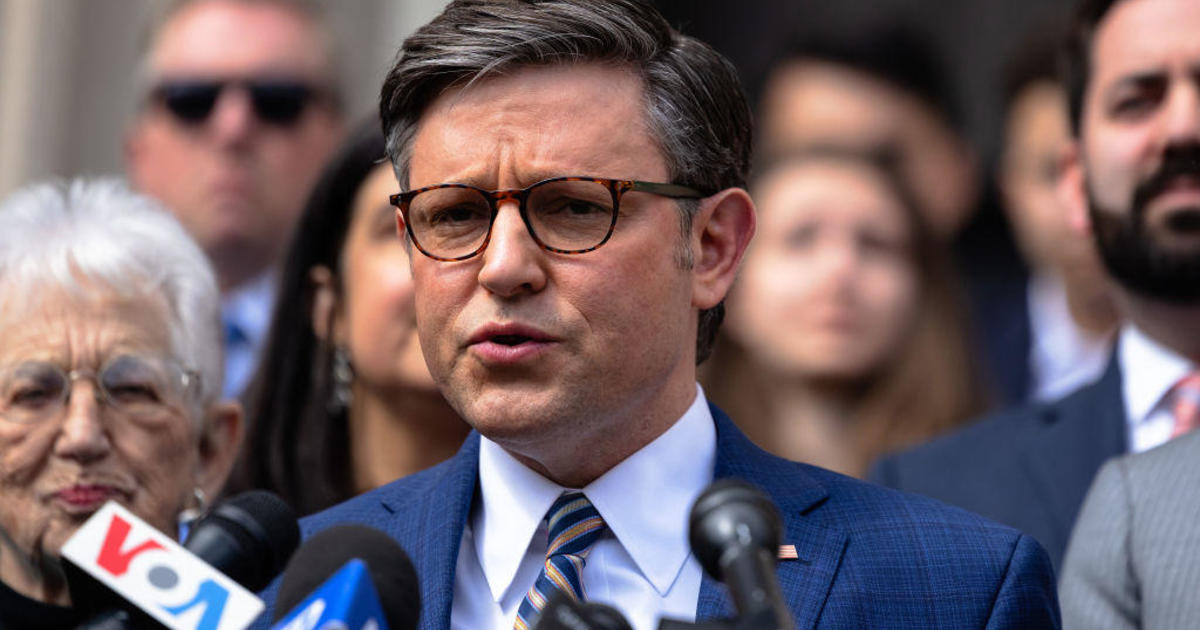Newly obtained video shows movement of group suspected of constructing Jan. 6 gallows hours before Capitol siege
The people who erected the infamous gallows and noose on the west front of the Capitol on Jan. 6, 2021, began their work in the predawn hours that day, according to newly released videos obtained by CBS News. A report by a GOP-led U.S. House subcommittee said the perpetrators remain unaccounted for by prosecutors.
Surveillance footage shared with CBS News shows the brazenness of the work behind the gallows and noose, which have a history of racist and threatening overtones. On Jan. 6, then-Vice President Mike Pence was presiding over the joint session of Congress to certify the Electoral College count and had been pressured by former President Donald Trump to unilaterally overturn the 2020 election. He refused to do so, while outside the Capitol, protesters and rioters around the gallows and noose chanted, "Hang Mike Pence."
The videos illustrate how a crew of people rolled pieces down major streets in plain sight, in the predawn hours before the Capitol siege.
The video shows several people wheeling large wooden beams near the Capitol during the 6 a.m. ET hour on Jan. 6.
The group can be seen moving its materials across Union Square and near Independence Avenue, two iconic areas near Capitol Hill that would later be overrun by some of the thousands who converged at the Capitol after a speech by former President Trump about 2 miles away, at the Ellipse.
The movement of the pieces occurred early in the morning, when the streets were otherwise empty. The shifting of the wooden beams is clearly shown in recordings collected by some of the hundreds of surveillance cameras on and near Capitol Hill.
According to a report by a Republican-led subcommittee of the House Committee on Administration, between 6:30 a.m. and 7:15 a.m., the group constructed the platform and two main pillars of the gallows, only leaving off the crossbeam.
The report said the crossbeam and a bright orange noose were added during the 1 p.m. hour on Jan. 6, as the rioting and the siege of the Capitol began.
Despite the outrage triggered by the display, the probe into who is responsible appears to be unsolved.
The subcommittee's review of the movement and construction of the gallows produced several grainy images of the faces of people believed to be near the assembly of the gallows. But a report by the House panel stated, "The individuals who constructed the gallows have never been identified."
A CBS News review of the charging documents in the approximately 1,300 Jan. 6 federal criminal cases filed by the Justice Department showed no case in which a defendant is accused of playing a role in the gallows construction.
A neon orange rope
The gallows was outfitted with a bright orange-colored rope. The color choice was noteworthy, according to Raymond Winbush, a researcher and professor at Morgan State University in Maryland. Winbush said the brightness and distinctiveness of the color was potentially a visual cue to attract attention to the noose.
Winbush told CBS News, "African Americans can't view the events of Jan. 6, 2021, and not recall the history of lynched Black people in America. The gallows were there; so were the ropes and, most chilling, the screaming faces of white men and women yelling for the blood of Mike Pence."
The footage obtained by CBS News also shows the parading of a large Confederate flag near the Capitol grounds in the early morning hours of Jan. 6, close to the time when the other group was transporting the suspected gallows beams. Multiple banners and images of the Confederate flag were seen amid the mob on Jan. 6.
After the mob confronted, assaulted and pushed beyond the police lines, the gallows was left unattended, according to journalist Michael Persson, who was covering the Capitol attack and discovered the orange noose had been cut down and tossed to the ground.
Persson said he witnessed a young Black man climb the gallows and cut down the noose. He believes the young man was a good Samaritan outraged by the display.
Persson told CBS News the good Samaritan "threw the noose away and ran away. Nobody seemed to have noticed. The crowd had already dispersed. There were just small groups lingering on the field. But still I thought it was a pretty courageous thing to do."
Persson recovered the rope and turned it over to the FBI. In late 2021, the FBI acknowledged it had the rope.
Persson said, "The gallows represented the doom of that day."
A Justice Department spokesman responded to a CBS News inquiry about the status of any investigation into the gallows construction on restricted grounds. The spokesman said, "The Jan. 6, 2021, breach of the U.S. Capitol is an ongoing investigation; therefore, we cannot discuss anything beyond the public record."
The U.S. Attorney's Office in Washington, D.C., which prosecutes Jan. 6 offenders, also declined to comment.
The gallows construction
The House subcommittee reviewing the gallows incident said in a February report that Capitol Police guidelines prohibit temporary structures "of any kind" on Capitol grounds, suggesting that gallows would immediately be removed once discovered. But the gallows were left untouched by Capitol Police officers from 6:00 a.m. on Jan. 6 until later that evening.
The subcommittee's review also noted that the crossbeam and noose weren't added to the wood base until the 1 p.m. hour — the same hour when the riotous mob began attacking police officers and advancing toward and beyond the police line.
Not far from the gallows, also on the west front of the Capitol, the inaugural platform where President-elect Joe Biden would speak two weeks later, was under construction.
Rep. Barry Loudermilk, a Georgia Republican who chairs the House subcommittee, told CBS News, "Even though the crossbar of the gallows wasn't placed until about 1 o'clock in the afternoon, the base platform was there (for hours). That — it and of itself — is against Capitol Police policy and rules."
Loudermilk said, "We've reviewed the radio traffic of Capitol Police that day and there is no mention of it."
House Democrats on the subcommittee said in a statement that the gallows would "never have been built" if Trump hadn't "summoned and dispatched a mob of armed rioters to raid the Capitol, interrupted the counting of electoral votes, and tried to overturn the results of a free and fair election he lost."
"We are pleased the Committee is highlighting this as it could assist law enforcement to determine who is responsible. Thanks to our brave officers, the makeshift gallows were never used during the attack," a Capitol Police spokesman told CBS News.
The subcommittee's report on the gallows incident provided a granular timeline of the group suspected of building the gallows during the morning of Jan. 6. The report said, "During this time, the apparent group leader along with one other person, left the group and walked down 3rd Street, heading north. They returned a few minutes later with coffee, and the entire group left the scene. Despite the leader's distinctive clothing — he was wearing a long trench coat, long white scarf, fedora-type hat, and walking with a cane — he has never been identified publicly."
The subcommittee's report also said, "At approximately 1:00 p.m., the group of five returned to the scene and the presumed leader, now wearing a baseball cap, installed the final crossbeam and added the noose made of bright orange rope. Shortly after construction was complete, all five men left the grounds."





